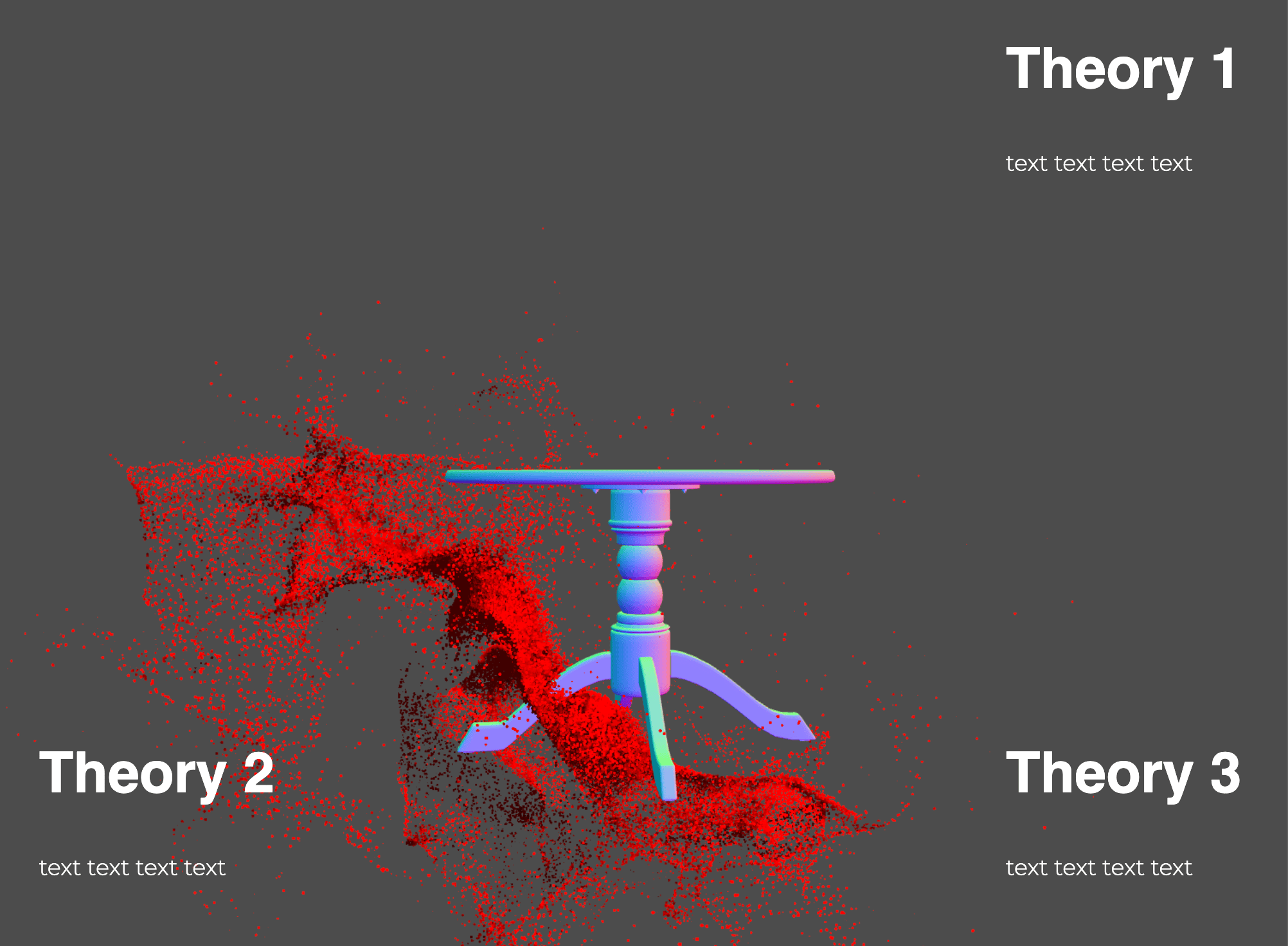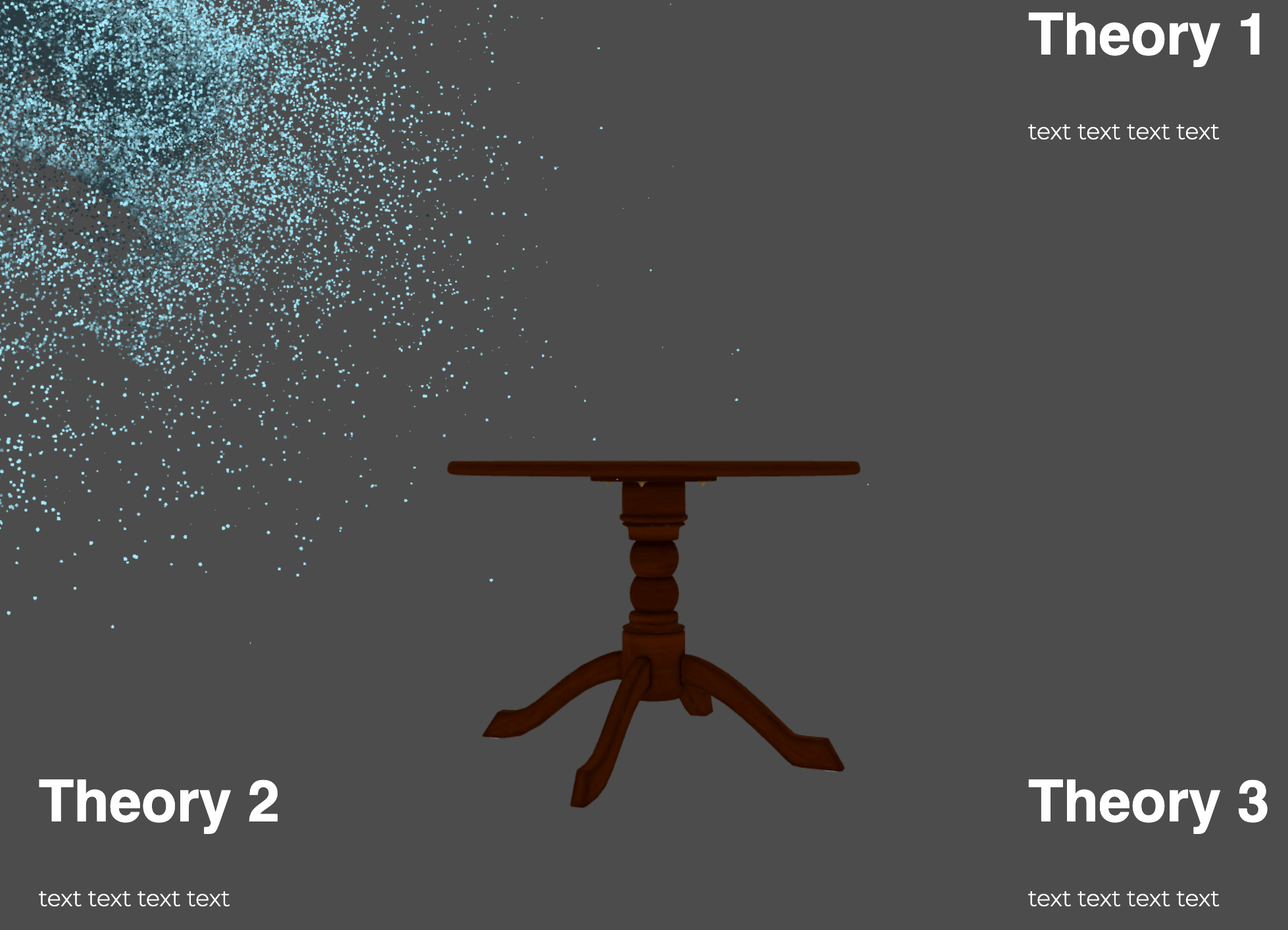
Loading model in WebGPU
To make it more like a kitchen or a dining table, I want to add a table to my conspiracy theory digital “room”. First, we add the gltf:
async loadGLTF() {
this.gltfLoader = new GLTFLoader()
this.gltf = await this.gltfLoader.loadFromUrl('./table.glb')
this.gltfScenesManager = new GLTFScenesManager({
renderer: this.renderer,
gltf: this.gltf,
})
}
But now my table is added with UV map as a texture:

If I log my gltf.material, it shows the correct material of my table. However, it doesn’t use it. To get our material back, we need to call buildShaders:
const material = this.gltf.materials[0]
this.gltfMeshes = this.gltfScenesManager.addMeshes((meshDescriptor) => {
const { parameters } = meshDescriptor
parameters.shaders = buildShaders(meshDescriptor)
})
And then there it is:

Let’s add a room around it. The example already had a box around logic, but I turned it into an actual room. I could have just build planes as walls and separate planes for the ceiling and the floor, but because I’m working with shaders, I decided to check which plane is wall or floor which directly inside of the shader using normals. I wrote a simple wallpaper shader for the wallpapers and here I use it only for the walls:
// Check if surface is a wall using normal
let isWall = abs(fsInput.normal.y) < 0.5; // true for walls (where y component is close to 0)
let isCeiling = (fsInput.normal.y) > 0.9; // true for ceiling (where y component is close to 1 and is positive)
// Apply wallpaper only to walls
var wallpaper: vec3f;
if (isWall) {
wallpaper = applyWallpaper(shading.color, fsInput.uv);
} else if (isCeiling) {
wallpaper = vec3f(254.0 / 256.0, 253.0 / 256.0, 238.0 / 256.0); // ceiling color
} else {
var floorColor: vec3f = vec3f(55.0 / 256.0, 23.0 / 256.0, 4.0 / 256.0); // floor color
//add a bit of shadow in the center
let center = vec2f(0.5, 0.15);
let distance = length(fsInput.uv - center);
let shadow = 1.0 - smoothstep(0.15, 0.2, distance);
wallpaper = mix(floorColor, vec3f(36.0 / 256.0, 14.0 / 256.0, 1.0 / 256.0), shadow);
}
Then I added 3 most common conspiracy theories and this is how it looks:

You’re all set to choose your favorite fighter at the table discussion!
I missed some logging earlier, so I will break today into 2 separate posts and pick up from where I left with my impossible geometry.